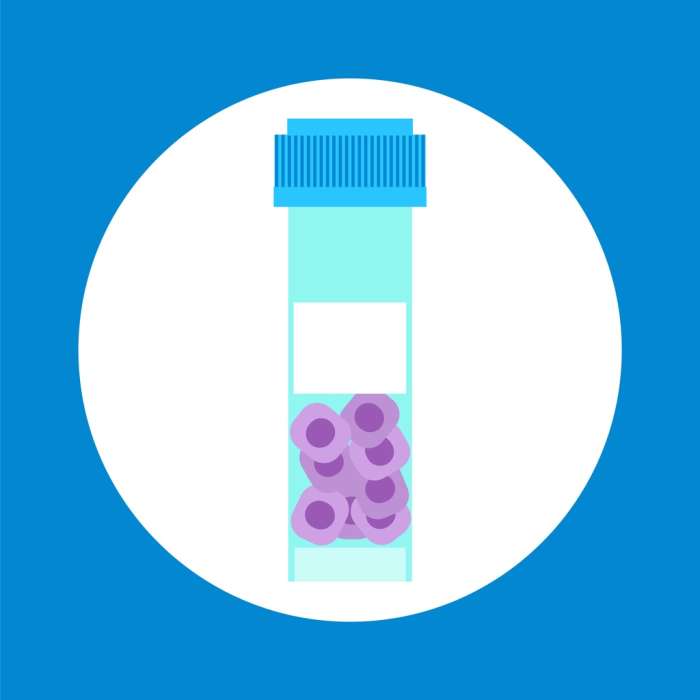Cord blood banking is the proverbial insurance policy that you can have on your child’s health. This blood contains a special type of stem cell that can treat nearly 80 diseases. For those interested in setting up an extra line of defense for their little one, this article will help you understand the benefits and costs of cord blood banking, as well as how the whole process works.
What is Cord Blood?
Umbilical cord blood is the blood that remains in the placenta and the umbilical cord immediately following childbirth. It contains hematopoietic stem cells that can be used to create an array of other blood cells. According to the Mayo Clinic, “stem cells are the body's raw materials — cells from which all other cells with specialized functions are generated....no other cell in the body has the natural ability to generate new cell types.”
When is Cord Blood Necessary?
For children diagnosed with life-threatening illnesses such as cancers (leukemia and lymphoma), blood disorders (sickle cell anemia), and genetic disorders (such as Tay-Sachs Disease), cord blood stem cells have the unique ability to build new healthy blood cells and improve the immune system of the patient.
While this process is not for everyone, it can be a life-saving resource for some families. For instance, if you or your spouse were adopted and are unaware of your genetic background or if you used an egg or sperm donor to conceive, it may be worthwhile to look into investing in this procedure.
More importantly, if your family has a history of the many diseases and conditions that cord blood can treat, your child is more likely to need a stem cell transplant. Thus, cord blood banking, (the safe and proper storage of your child’s cord blood at a licensed facility), could be worth the cost if an autologous transplant is required in your child’s future.
Benefits of Storing Cord Blood
You may be thinking that bone marrow is always an option, but a newborn’s cord blood is the better choice for a number of reasons. Firstly, it has never been exposed to any illnesses or infections. This makes it less susceptible to rejection or contamination.
Why Do I Keep Having Girl Babies (Or Boys)? Genetics and Gender
Why do some women only give birth to boy or girl babies? It could be, at least in part, due to genetics. Doctors have weighed in on what can genetically impact the sex of a baby. We all know that the X chromosome and Y chromosome determine whether a woman is going to have a baby girl or a baby boy. But, why are some women having all boys while others are having all girls? Read More
Secondly, it provides the child with an exact match of the human leukocyte antigen (HLA). Moreover, if the cord blood is intended for a sibling, a perfect HLA match is not required. This is not the case with a bone marrow transplant. Additionally, an immediate family member (a parent or sibling) only has a 25% chance of being a full match to the child when bone marrow is used.
Lastly, cord blood is simple and effortless to obtain and there is no risk to the mother or the baby. Conversely, bone marrow requires a donor who will have to endure a procedure and possible side effects. If you store cord blood, it is ready for future use the moment you need it. This can ensure a timely treatment and potentially better health outcomes.
High Costs vs Benefits

According to the American College of Obstetricians and Gynecologists (ACOG), “private umbilical cord blood banking may be considered when there is knowledge of a family member with a medical condition (malignant or genetic) who could potentially benefit from cord blood transplantation.” However, they go on to note that “the routine collection and storage of umbilical cord blood with a private cord blood bank is not supported by the available evidence.”
Why is this? First, there is an extravagant cost to cord blood banking with a private facility and this service is not covered by insurance. Second, most parents are lucky enough to not find a need for their baby’s cord blood. Most importantly, though, if your child is diagnosed with a genetic disease, they will not actually be able to use their own cord blood because it will contain the same cells that caused the condition. Therefore, it is important to consider if this investment is necessary for your family.
The price associated with cord blood banking is a big disadvantage for many. The AAP notes that “families who place their infants' cord blood with a private cord blood bank must pay a placement fee (between $1350 - $2300), as well as a smaller annual maintenance fee (between $100–$175).” However, these costs were averaged in 2015. Many companies now charge as much as $3000 initially with up to $400 in annual storage fees.
This ensures the safe storage of the cord blood, but the bill can add up quickly, making it an unattainable option for many families. Moreover, many hospitals also charge a fee for collection.
Cord Blood Donation

Both the ACOG and the American Academy of Pediatrics (AAP) note that while private cord blood banking is not advised for everyone, donating cord blood to a public cord blood bank is a huge benefit to society. By choosing to make this generous contribution, you are not only giving hope to the family of a sick child, but you are also expanding the donor pool, which will in turn help more patients find the best possible match.
The National Marrow Donor Program (NMDP) operates the Be The Match registry, a global resource that connects donors and patients needing bone marrow and cord blood transplants. If you are interested in becoming a donor, you will have to meet certain criteria so make sure to investigate this option early on in your pregnancy. Additionally, the American Association of Blood Banks can also assist willing donors to locate blood banks with the proper accreditations in their area.
How Cord Blood Banking Works
Whether you choose to save your cord blood or donate it, the process is simple. The only caveat is that this cannot be a last minute decision. You must decide on this procedure by the 34th week of pregnancy, but the sooner the better. This allows you to find a bank in your region, register, and have the collection kit mailed to you.
Then, once you give birth, your healthcare provider will clamp the cord, cut it, and extract the cord blood using a needle. The whole process takes a mere 10 minutes, but the benefits of cord blood can extend for decades. Cord blood collected will then be transported to the storage facility and frozen within 48 hours.
Delayed Cord Clamping
The decision to bank your child’s cord blood is extremely personal and one that will not appeal to every family. If you decide against this procedure, then consider giving your child a different form of protection. Delayed cord clamping involves postponing the cutting of the umbilical cord by up to five minutes. This allows for that blood to flow into your little one after delivery.
Research shows that by doing this, you can increase your child’s blood volume by up to a third and improve their neurodevelopment. Moreover, this iron-rich liquid can help to boost their blood pressure and reduce their chances of having anemia. If you would like to give your child this leg up at the very start of their life, make sure to talk to your physician and the labor and delivery team at the hospital about this process.



